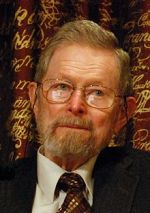
George Elwood Smith
The Nobel Prize in Physics 2009
Co-nobelist: Charles K. Kao, Willard S. Boyle
Applied physicist. Co-inventor of imaging semiconductor circuit, the charge-coupled device (CCD sensor) which has become an electronic eye in almost all areas of photography.
His interest was Applied Mathematics. Mathematics Professor was dismissed. So he became a physicist – Applied not Theoretical because he was interested in hands-on work.
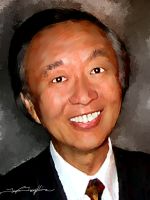
Painting Tim Tompkins
Painthistory.com
Charles Kao Ph.D.
The Nobel Prize in Physics 2006
Co-nobelist: Willard S. Boyle, George E. Smith
Prize motivation: “for groundbreaking achievements concerning the transmission of light in fibers for optical communication.”
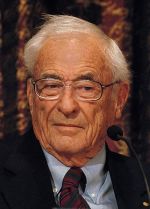
Willard Boyle Ph.D.
The Nobel Prize in Physics 2006
Co-nobelists: Charles K. Kao, George E. Smith
Prize motivation: “for the invention of an imaging semiconductor circuit – the CCD sensor.”
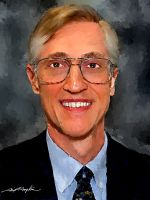
PaintHistory.org
John C. Mather Ph.D.
The Nobel Prize in Physics 2006
Co-nobelist George F. Smoot
Physicist – Astrophysics, Instrumentation. COBE, Blackbody form and anisotropy of the cosmic microwave background radiation.
“For years I had successfully repelled all challenges to my concentration on one overwhelming responsibility. Now, it was done, and I switched my attention to …”

Hoefner, Wiki.
George Smoot Ph.D.
The Nobel Prize in Physics 2006
Co-nobelist: John C. Mather
Prize motivation: “for their discovery of the blackbody form and anisotropy of the cosmic microwave background radiation.”
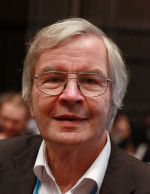
Theodor Hansch Ph.D.
The Nobel Prize in Physics 2005
Co-nobelists: Roy J. Glauber, John L. Hall
Prize motivation: “for their contributions to the development of laser-based precision spectroscopy, including the optical frequency comb technique.”

Wolfgang Ketterle
Wolfgang Ketterle Ph.D.
The Nobel Prize in Physics 2001
Nobel co-recipients Eric A. Cornell, Carl E. Wieman
Physicist – Atomic Physics. Hobbies: Running, Bicycling.
“…the quest for pure knowledge and the pursuit of goals which are only vaguely defined and change as the research progresses… I didn’t anticipate that the best was still to come”.
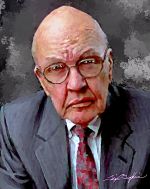
Painting Tim Tompkins
PaintHistory.com
Jack S. Kilby Ph.D.
The Nobel Prize in Physics 2000
Co-nobelists Zhores Alferov, Herbert Kroemer
Prize: “for his part in the invention of the integrated circuit.
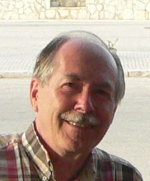
Gerardus ‘t Hooft Ph.D.
The Nobel Prize in Physics 1999
Nobel co-recipient Martinus J.G. Veltman
Theoretical Physicist – Particle Physics. For PH.D Thesis work in 1971, Nobel Prize awarded in 1999.
“A man who knows everything,” my answer at age 8 yrs, regarding what I’d like to become when I grow up. I meant “scientist”, someone who unravels the secrets of the fundamental Laws of Nature.
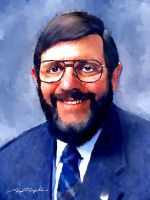
PaintHistory.org
William D. Phillips Ph.D.
The Nobel Prize in Physics 1997
Nobel co-recipients Steven Chu, Claude Cohen-Tannoudji
Physicist. Development of methods to cool and trap atoms with laser light. Think about physics intuitively. Open, lively discussion of physics problems. Do physics at frontiers competitively with openness, humanity, cooperation. Excellent teacher. Religious.
“No prize can compare in importance to family and friends I count as my greatest treasures”.
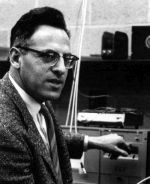
Wikipedia
Frederick Reines B.S. (Mechanical Engineering), Ph.D. (Physics)
The Nobel Prize in Physics 1995
National Medal of Science – Physical Sciences 1983
Nobel co-recipient Martin L. Perl
Award: “for the detection of the neutrino”
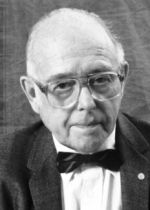
Clifford G. Shull Ph.D.
The Nobel Prize in Physics 1994
Co-nobelist Bertram N. Brockhouse
Prize “for the development of the neutron diffraction technique”

Assoc/Wikipedia
Henry W. Kendall Ph.D.
The Nobel Prize in Physics 1990
Co-nobelist Jerome I. Friedman, Richard E. Taylor
Award: “for their pioneering investigations concerning deep inelastic scattering of electrons on protons and bound neutrons, which have been of essential importance for the development of the quark model in particle physics”
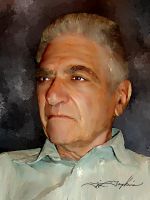
von Dobschutz. Painting
Tim Tompkins PaintHistory.com
Jack Steinberger Ph.D.
The Nobel Prize in Physics 1988
National Medal of Science – Physical Sciences 1988 USA
Co-Nobelist: Leon M. Lederman, Melvin Schwartz
Physicist, Cosmologist, Astrophysicist. Hobbies: Playing the Flute, Tennis, Mountaineering, Sailing.
To Ganga Library founder on 3 Aug 2014, “I have used your questions to me as an incentive to prepare a list of my publications”.
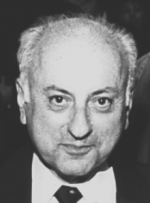
Melvin Schwartz Ph.D.
The Nobel Prize in Physics 1988
Co-Nobelist: Leon M. Lederman, Jack Steinberger
Award: “for the neutrino beam method and the demonstration of the doublet structure of the leptons through the discovery of the muon neutrino”
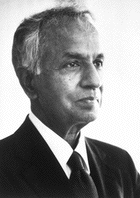
Subramanyan Chandrasekhar Ph.D.
The Nobel Prize in Physics 1983
Co-Nobelist: William A. Fowler
Award: “for his theoretical studies of the physical processes of importance to the structure and evolution of the stars” stems”
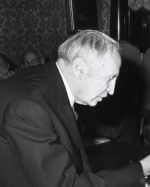
John H. van Vleck Ph.D.
The Nobel Prize in Physics 1977
The President’s National Medal of Science – Physical Sciences 1966
Nobel co-recipients Philip W. Anderson, Sir Nevill F. Mott
Award: “for their fundamental theoretical investigations of the electronic structure of magnetic and disordered systems”
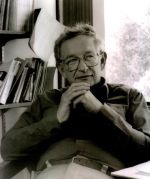
Philip Anderson
The Nobel Prize in Physics 1977
Co-Nobelist Sir Nevill F. Mott, John H. van Vleck
Award: “for their fundamental theoretical investigations of the electronic structure of magnetic and disordered systems.”
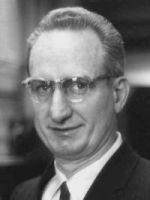
James Rainwater Ph.D.
The Nobel Prize in Physics 1975
Co-Nobelists: Aage N. Bohr, Ben R. Mottelson
Award: “for the discovery of the connection between collective motion and particle motion in atomic nuclei and the development of the theory of the structure of the atomic nucleus based on this connection”
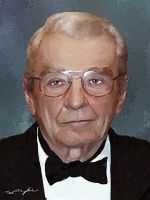
Wikipedia. Painting Tim Tompkins
PaintHistory.com
Ivar Giaever
The Nobel Prize in Physics 1973
Nobel co-recipients: Leo Esaki, Brian D. Josephson
“for their experimental discoveries regarding tunneling phenomena in semiconductors and superconductors, respectively.”
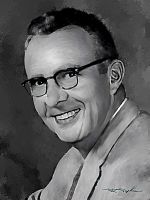
Wikipedia. Painting Tim
Tompkins PaintHistory.com
Luis Alvarez Ph.D.
The Nobel Prize in Physics 1968
Award: “for his decisive contributions to elementary particle physics, in particular the discovery of a large number of resonance states, made possible through his development of the technique of using hydrogen bubble chamber and data analysis”
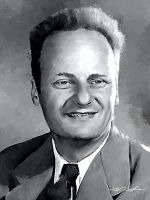
Painthistory.com .
Hans Bethe Ph.D.
The Nobel Prize in Physics 1967
Award: “for his contributions to the theory of nuclear reactions, especially his discoveries concerning the energy production in stars”
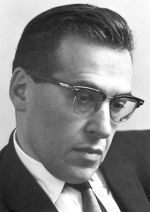
Julian Schwinger Ph.D.
The Nobel Prize in Physics 1965
National Medal of Science – Physical Sciences 1964
Nobel co-recipients Sin-Itiro Tomonaga, Richard P. Feynman
Award: “for their fundamental work in quantum electrodynamics, with deep-ploughing consequences for the physics of elementary particles”
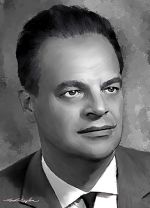
Painting Tim Tompkins
PaintHistory.com
Nicolay Basov
The Nobel Prize in Physics 1964
Nobel co-recipients: Charles H. Townes, Aleksandr M. Prokhorov
Award: “for fundamental work in the field of quantum electronics, which has led to the construction of oscillators and amplifiers based on the maser-laser principle.”
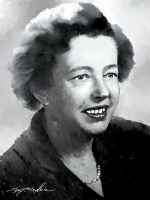
Painting Tim Tompkins –
PaintHistory.com
Maria G. Mayer Ph.D.
The Nobel Prize in Physics 1963
Co-Nobelists: Eugene Wigner, J. Hans D. Jensen
Award: “for their discoveries concerning nuclear shell structure”
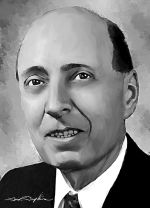
painting Tim Tompkins
PaintHistory.com
Eugene Wigner Ph.D.
The Nobel Prize in Physics 1963
The President’s National Medal of Science – Physical Sciences 1968
Nobel co-recipients Maria Goeppert Mayer, J. Hans D. Jensen
Award: “for his contributions to the theory of the atomic nucleus and the elementary particles, particularly through the discovery and application of fundamental symmetry principles”
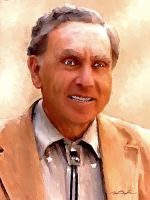
Tompkins PaintHistory.com
Robert Hofstadter Ph.D.
The Nobel Prize in Physics, 1961
National Medal of Science – Physical Science 1986
Nobel co-recipient Rudolf Mössbauer
Nuclear and particle physicist. Discoverer of sodium iodide scintillation counters. Carried out electron scattering from atomic nuclei, revealing structure of nuclei and nucleons. Original proposer of two-mile SLAC linear accelerator. Pioneer of gamma-ray astronomy, using EGRET detector aboard the Compton observatory. Research in laser fusion, applications of physics to medicine.
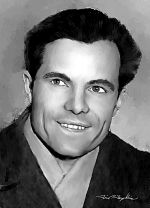
Painting Tim Tompkins
PaintHistory.com
Rudolf Mossbauer
The Nobel Prize in Physics 1961
Nobel co-recipient: Robert Hofstadter
“for his researches concerning the resonance absorption of gamma radiation and his discovery in this connection of the effect which bears his name.”
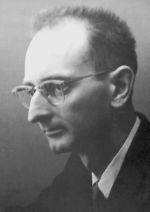
Domain/Wikipedia
Owen Chamberlain Ph.D.
The Nobel Prize in Physics 1959
Co-Nobelist: Emilio Segrè
Award: “for their discovery of the antiproton”
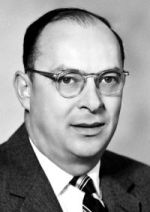
Domain/Wikipedia
John Bardeen Ph.D.
The Nobel Prize in Physics 1956
Co-Nobelists: William B. Shockley, Walter H. Brattain
The Nobel Prize in Physics 1972
Co-Nobelist: Leon Cooper, John Robert Schrieffer
Award 1956: “for their researches on semiconductors and their discovery of the transistor effect”
Award 1972: “for their jointly developed theory of superconductivity, usually called the BSC-theory”
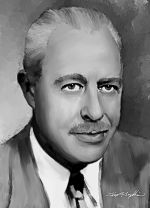
Painting Tim Tompkins
PaintHistory.com
Walter Brattain Ph.D.
Nobel Prize in Physics 1956
Co-Nobelists: William B. Shockley, John Bardeen
Award: “for their researches on semiconductors and their discovery of the transistor effect”
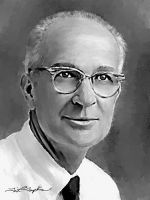
Stanford News Service;
Wikipedia. Painting Tim Tompkins
PaintHistory.com
William B. Shockley Ph.D.
Nobel Prize in Physics 1956
Nobel co-recipients John Bardeen, Walter H. Brattain
Award: “for their researches on semiconductors and their discovery of the transistor effect”
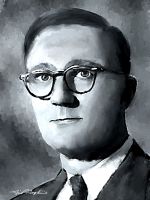
Painting Tim Tompkins –
PaintHistory.com
Polykarp Kusch Ph.D.
Nobel Prize in Physics 1955
Co-Nobelist: Willis E. Lamb
Award: for his precision determination of the magnetic moment of the electron”
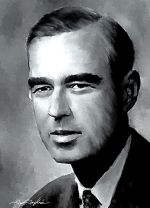
Painting Tim Tompkins –
PaintHistory.com
Willis E. Lamb Ph.D.
Nobel Prize in Physics 1955
Co-Nobelist: Polykarp Kusch
Award: “for his discoveries concerning the fine structure of the hydrogen spectrum”
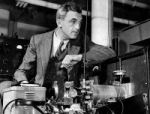
domain/Wikipedia
Felix Bloch Ph.D.
Nobel Prize in Physics 1952
Nobel co-recipient: E. M. Purcell
Award: “for their development of new methods for nuclear magnetic precision measurements and discoveries in connection therewith”
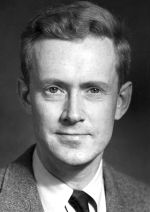
domain/Wikipedia
Edward M. Purcell B.S.E.E.,Ph.D.
Nobel Prize in Physics 1952
Nobel co-recipient Felix Bloch
Award: “for their development of new methods for nuclear magnetic precision measurements and discoveries in connection therewith”
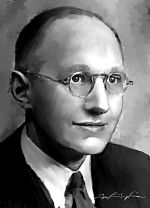
Painting Tim Tompkins
PaintHistory.com
Ernest Walton
Nobel Prize in Physics 1951
Nobel co-recipient: John Cockcroft
“for their pioneer work on the transmutation of atomic nuclei by artificially accelerated atomic particles.”
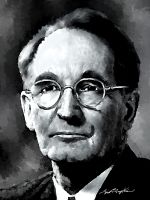
Painting Tim Tompkins –
PaintHistory.com
Percy Bridgman Ph.D.
Nobel Prize in Physics 1946
Award: “for the invention of an apparatus to produce extremely high pressures, and for the discoveries he made therewith in the field of high pressure physics
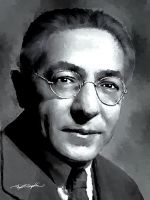
Painting Tim Tompkins
PaintHistory.com
Isidor Isaac Rabi Ph.D.
Nobel Prize in Physics 1944
Award: “for his resonance method for recording the magnetic properties of atomic nuclei”
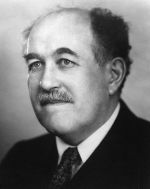
domain/Wikipedia
Otto Stern Ph.D.
Nobel Prize in Physics 1943
Award: “for his resonance method for recording the magnetic properties of atomic nuclei”
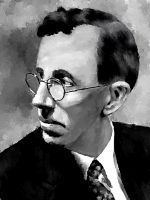
Painting – Tom Tompkins –
PaintHistory.com
Clinton Davisson Ph.D.
Nobel Prize in Physics 1937
Co-nobelist George Paget Thomson
Award: “for their experimental discovery of the diffraction of electrons by crystals”
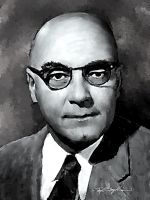
Painting Tim Tompkins –
PaintHistory.com
Carl D. Anderson Ph.D.
Nobel Prize in Physics 1936
Co-Nobelist Victor F. Hess
Award: “for his discovery of the positron.”
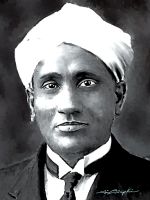
PaintHistory.com
Sir Chandrasekhara Venkata Raman M.A. [Physics]
Nobel Prize in Physics 1930
Atomic Physicist. Molecular Diffraction of Light. Raman Effect. Structure, optical behaviour of iridescent substances. Acoustics, violin.
Raman lost Nobel Prize money to fraudulent financer. Meeting fraudster years later, he said: You deserve Nobel Prize for your cunning in duping Nobel Laureate!
Playful comment: Unfortunately Economics Nobel instituted later in 1969!
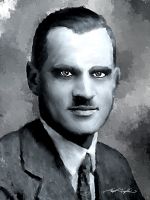
Painting Tim Tompkins –
PaintHistory.com
Author H. Compton Ph.D.
Nobel Prize in Physics 1927
Co-nobelist C.T.R. Wilson
Award: “for his discovery of the effect named after him”
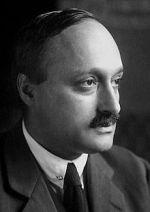
James Franck Ph.D.
Nobel Prize in Physics 1925
Co-nobelist Gustav Hertz
Award: “for their discovery of the laws governing the impact of an electron upon an atom”
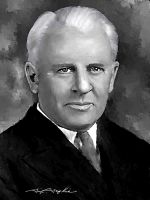
Painting Tim Tompkins
PaintHistory.com
Robert A. Millikan Ph.D.
Nobel Prize in Physics 1923
Award: “for his work on the elementary charge of electricity and on the photoelectric effect”
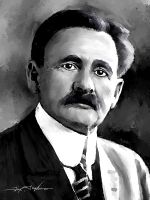
Tompkins PaintHistory.com
Albert A. Michelson Ph.D.
Nobel Prize in Physics 1907
Award: “for their discoveries concerning nuclear shell structure”
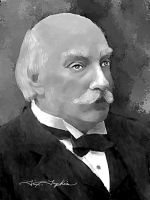
Tompkins PaintHistory.com
John William Strutt
Nobel Prize in Physics 1904
Award: “for his investigations of the densities of the most important gases and for his discovery of argon in connection with these studies.”